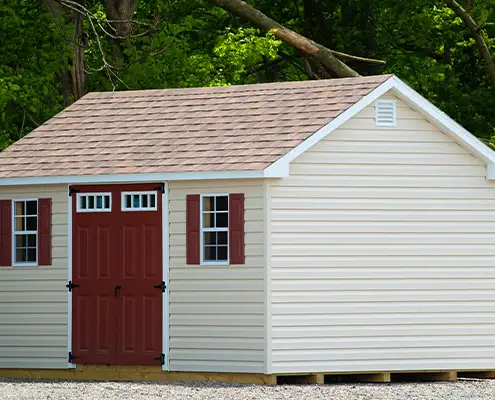What is the Cheapest Way to Move a Short Distance?
You’re moving a short distance but don’t want to break the bank.
Moving is not cheap, especially if you are going to hire a full service short distance moving company.
The good news is, you have options. It is even possible to move for free.
Here Are the 5 Cheapest Ways to Move Locally:
| Move type | Est. cost |
|---|---|
| Full Do-It-Yourself (DIY) | Free |
| Rent a Truck and Do-It-Yourself | $50-$200 |
| Hire “Labor Only” Moving Help | $100-$400 |
| Rent a Moving Container | $250-$600 |
| Hire Full Service Movers (Assisted) | $400-$800 |
Price Estimate Info
The estimated cost ranges assume 5-8 hours of labor for an in-town move of 50 miles or less. For longer distance moves, see our article: 5 Cheapest & Best Ways to Move Cross Country.
Want to skip the hassle of a DIY move? Click below to get free quotes from the best-priced, top-rated local movers in your area:
Otherwise, keep reading to help decide which route best suits your budget and ability.
1. Full Do-It-Yourself (DIY)
*Est. Cost: FREE
It is possible to move for nothing more than the cost of gas. The cheapest way to move a short distance is to do everything yourself. Use your own truck/trailer and enlist the help of several able-bodied friends or family members. Be sure to keep your fridge stocked and your calendar empty for your friend’s moving day.
Pros
- (Practically) FREE – Enough said.
Cons
- Lots of time – It will take you longer to move than the professionals. You also may need to take multiple trips if you are using a pickup truck.
- Required work – Moving requires a good amount of physical labor.
- Risk of damage to your belongings – There is a right way and wrong way to safely transport your belongings. The pros have the proper equipment and technique. If you do it yourself, no matter how careful you are, there is more risk of damage to your items.
Bottom Line: A full do-it-yourself move is your cheapest option for an in-town move, but it is not for everyone. If the cons are enough to make you shell out a bit of cash, then continue reading to #2.
2. Rent a Truck and Do-It-Yourself
*Est. Cost: $50 – $200
With this option, you still do everything yourself, but you are renting a truck. Truck rental is very affordable, starting as low as $20 for an in-town move. The mileage fees are typically where the majority of the bill comes from.
Pros
- Cost-effective – The cost to rent the truck is your only fee.
- Extra cargo space – Get the added benefit of extra trailer space, saving you multiple trips and headache.
Cons
- Lots of time – While you save some time with extra cargo space, you still have to move everything yourself.
- Lots of work – Similar to the full do-it-yourself option, you still have to move everything yourself.
- Risk of damage – Again, without the right equipment and experience, there is a more inherent risk of damage to your belongings.
Bottom Line: Renting a truck is relatively inexpensive and the time and hassle savings are definitely worth it. However, it still holds most of the disadvantages of a full DIY move.
3. Hire “Labor Only” Moving Help
*Est. Cost: $100 – $400
With this option, you rent the truck and hire an additional hand or two as “labor only” help. Labor only means the moving help does not provide a truck or equipment. They are just an extra hand. You can find independent labor contractors for as cheap as $15-$20 an hour, or hire more reputable help from a moving company for around $40-$60 per person per hour.
Pros
- Cost-effective – Offers a good hybrid between DIY and hiring a moving company.
- Experienced help – Your experienced helper(s) will help speed up the process and help you transport and load your items safely.
Cons
- Reduced reliability – Depending on who you hire, your help may be less reliable since they do not have to meet the same requirements as full-service moving companies.
- Lots of work – While you will lighten the load by hiring help, you still need to be willing to do some lifting.
Bottom Line: Hiring moving help can be a very cost-effective hybrid between doing it yourself and hiring full-service movers. An important decision is who you hire. While you may be able to hire help for as little as $15 an hour, you typically get what you pay for.
4. Rent a Moving Container
*Est. Cost: $250 – $600
A moving container is a standalone container that is loaded on and off of a moving truck. When you rent one, the container company drops the container off in your driveway. You load it. They pick it up, transport it, and drop it off. You unload it.
Pros
- Cost-effective – While you still have to pay a bit more than a full DIY move, its still way cheaper than hiring a moving company.
- Transportation – Don’t worry about hauling a big moving truck across town. They do the driving for you.
- Storage – Need a halfway house for your belongings? Moving containers can double as affordable storage.
Cons
- Lots of work – You are still doing all of the work except for the driving.
- More logistics – Unlike a moving truck that you can drive off your lot when you are ready, you need to coordinate a pick up and drop off time with the moving company.
- Less effective for local moves – The main benefit of moving containers is the transportation. This makes them a great long distance solution, but for local moves you may be better off driving yourself.
Bottom Line: A moving container is a unique moving option adding the benefit of storage and transportation for a low rate. If you are watching costs and willing to put in some work, it could be a great option.
5. Hire Full Service Movers (Assisted)
*Est. Cost: $400 – $800
With this option you hire full service short distance movers – meaning they do the loading, transportation and unloading. But what you do to significantly reduce your bill is make their job easy. Since movers usually bill by the hour for short distance moves, you want to make their job go as fast as possible. Here are the steps you can take to expedite your mover’s job:
- Pack everything into a box yourself
- Disassemble and reassemble everything that can’t fit through the door (sectionals, workout equipment, bed frames, dining tables, etc.)
- Prop open doorways & clear pathways
- Hire a sitter for your kids and pets
- Anything particularly fragile or small enough to fit into your personal vehicle, transport yourself
- Move everything into the garage yourself when moving out
- Have the moving company unload & leave everything in your garage when moving in
- Let the moving company know your budget and that speed is your priority
Pros
- Full service from professionals – Breathe easy knowing that you are leaving it to the professionals. They will move your stuff faster and more safely than you would be able to yourself. They are also insured, so if anything is damaged, you can file a claim.
Cons
- Price – While you can significantly reduce your bill by taking steps 1-8 above, hiring a full-service moving company will still be more expensive than the first four options.
Bottom Line: If you have a bit of a budget for your move, we highly recommend this option. Taking the proper steps to speed up your mover’s process will significantly reduce your bill, and the peace of mind will be worth it.
Conclusion
You have many options for moving. Based on your budget, time, and muscle size, you will want to consider the above options and choose the one that is the best balance between cost and service.






